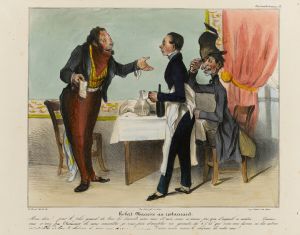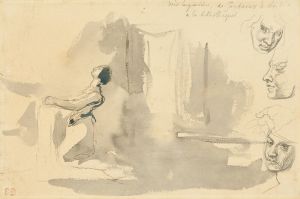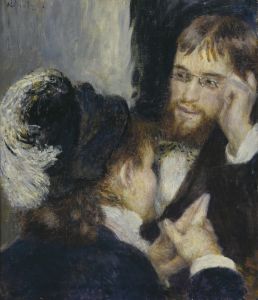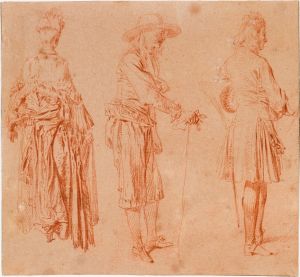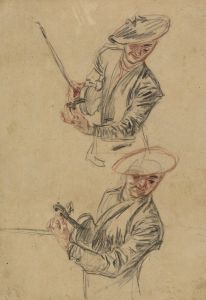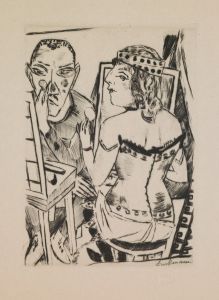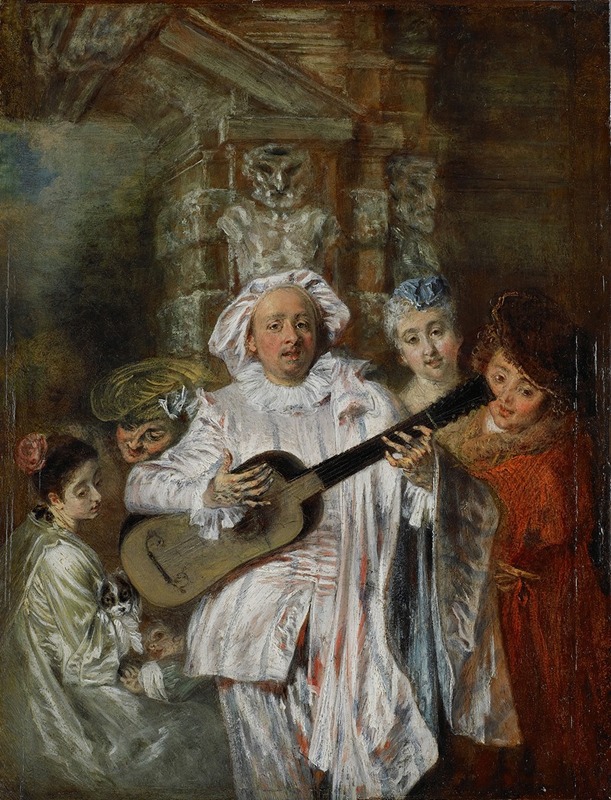
Sous un habit de Mezetin
A hand-painted replica of Jean-Antoine Watteau’s masterpiece Sous un habit de Mezetin, meticulously crafted by professional artists to capture the true essence of the original. Each piece is created with museum-quality canvas and rare mineral pigments, carefully painted by experienced artists with delicate brushstrokes and rich, layered colors to perfectly recreate the texture of the original artwork. Unlike machine-printed reproductions, this hand-painted version brings the painting to life, infused with the artist’s emotions and skill in every stroke. Whether for personal collection or home decoration, it instantly elevates the artistic atmosphere of any space.
Jean-Antoine Watteau's Sous un habit de Mezetin (translated as Under the Guise of Mezetin) is a painting created by the French Rococo artist, renowned for his depictions of theatrical and pastoral scenes. The work is believed to have been completed around 1718–1720, during a period when Watteau was deeply influenced by the commedia dell'arte, a popular form of Italian improvised theater that had a significant impact on European art and culture in the 17th and 18th centuries.
The painting portrays a single male figure dressed as Mezetin, a stock character from the commedia dell'arte. Mezetin is typically depicted as a comedic and amorous servant, often associated with music and flirtation. In Watteau's interpretation, the figure is shown wearing an elaborate costume, characterized by its rich textures and soft, pastel tones, hallmarks of the Rococo style. The character holds a musical instrument, likely a guitar or lute, which underscores the theme of music and performance. This motif was a recurring element in Watteau's work, reflecting his fascination with the interplay between art, theater, and human emotion.
The setting of the painting is intimate and subdued, with the figure placed against a neutral or softly rendered background. This compositional choice draws attention to the character's expression and posture, which convey a sense of introspection or melancholy, rather than the overt humor typically associated with Mezetin. This nuanced portrayal is characteristic of Watteau's ability to infuse his subjects with a sense of ambiguity and emotional depth.
Watteau's Sous un habit de Mezetin exemplifies his mastery of color, light, and texture. The delicate brushwork and subtle gradations of tone create a sense of immediacy and vibrancy, while the attention to detail in the costume and musical instrument highlights the artist's technical skill. The painting also reflects Watteau's broader interest in themes of performance, identity, and the transient nature of human experience.
The exact provenance of the painting is not fully documented, but it is currently housed in the Metropolitan Museum of Art in New York City. It remains a significant example of Watteau's contribution to the Rococo movement and his ability to blend theatricality with poignant human emotion.





